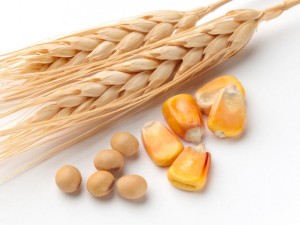| Online: | |
| Visits: | |
| Stories: |

| Story Views | |
| Now: | |
| Last Hour: | |
| Last 24 Hours: | |
| Total: | |
Simple Food Tips for Improved Brain Function
The average American shockingly gets 70% of their calories from just three foods — corn, wheat, and soy. (1) Virtually none of this is in a form that can be considered real food.
Corn is used to make high fructose corn syrup (in reality, few of us are eating that much corn-on-the-cob!) Wheat is ubiquitous and almost always stripped of all nutritional value. Soy has been touted as a health food, but not the way now we eat it. Asian cultures eat fermented soyas a healthy condiment, not highly processed soy burgers and refined soy oil.
We consume a lot of corn and soy indirectly, too, since they are used to feed factory farm animals. Neither of these are natural food sources for livestock, but are used because they’re cheap and fatten up the animals fast. The same happens to humans when they eat a lot of these foods.
But it’s not just our weight that is affected. Your brain uses a disproportionate amount of energy — there’s a lot going on up there! That’s why it’s vital you give your brain the best food you can find, and that means eating real food.
Sources of healthy fats and foods high in antioxidants are considered top brain foods. Let’s take a look at why these nutrients are essential to brain health.
Antioxidants
Free radicals are unattached oxygen molecules that attack your cells much in the same way that oxygen attacks metal. Your brain is highly susceptible to free radical damage because it uses so much oxygen — approximately 25% of your body’s intake.
What goes on in your brain is not dissimilar to what happens when an old car rusts. When you can’t remember how to do something and you say you are “rusty” at it, you’re actually closer to the truth than you realize!
Antioxidants render free radicals harmless. You get antioxidants almost exclusively from plant-based foods in your diet. The best sources are fruits and vegetables, with all kinds of berries at the top of the list.
Other excellent antioxidant sources are green tea, red wine, and dark chocolate. Yum!
Healthy Oils
Your brain is largely made of fat — 60% by volume. It’s not an exaggeration to say that the quality of your brain largely depends on the quality of the fats you eat. That is why your diet should include foods high in good fats such as avocados, olives, nuts, healthy vegetable oils, grass-fed butter, and fatty fish like salmon, tuna, or mackerel.
The subject of culinary oils is particularly confusing. The commonly held beliefs about which oils are healthy are largely wrong. The two best vegetable oils to stock in your brain-healthy kitchen are olive oil and coconut oil.
Extra virgin olive oil:
A key part of the Mediterranean diet, olive oil is a healthy monounsaturated fat that is great to use as-is on things like salads. But olive oil should not be heated. Olive oil is unstable and easily burns at very low temperatures which causes unhealthy trans fat formation.
Unfortunately, there is a huge market in fake olive oil. A University of California study found that 69% of extra virgin olive oil sold in the US is not what the label says. Some of these aren’t extra virgin and many aren’t even olive oil! They are cheap adulterated oils colored and flavored to appear as olive oil.
Olive oil is a case where buying local is definitely best. California olive oils are much more likely to be high quality than Italian brands. If you are lucky enough to live near a local olive oil producer, get your olive oil there.
Source: http://truthisscary.com/2014/06/simple-food-tips-for-improved-brain-function/




